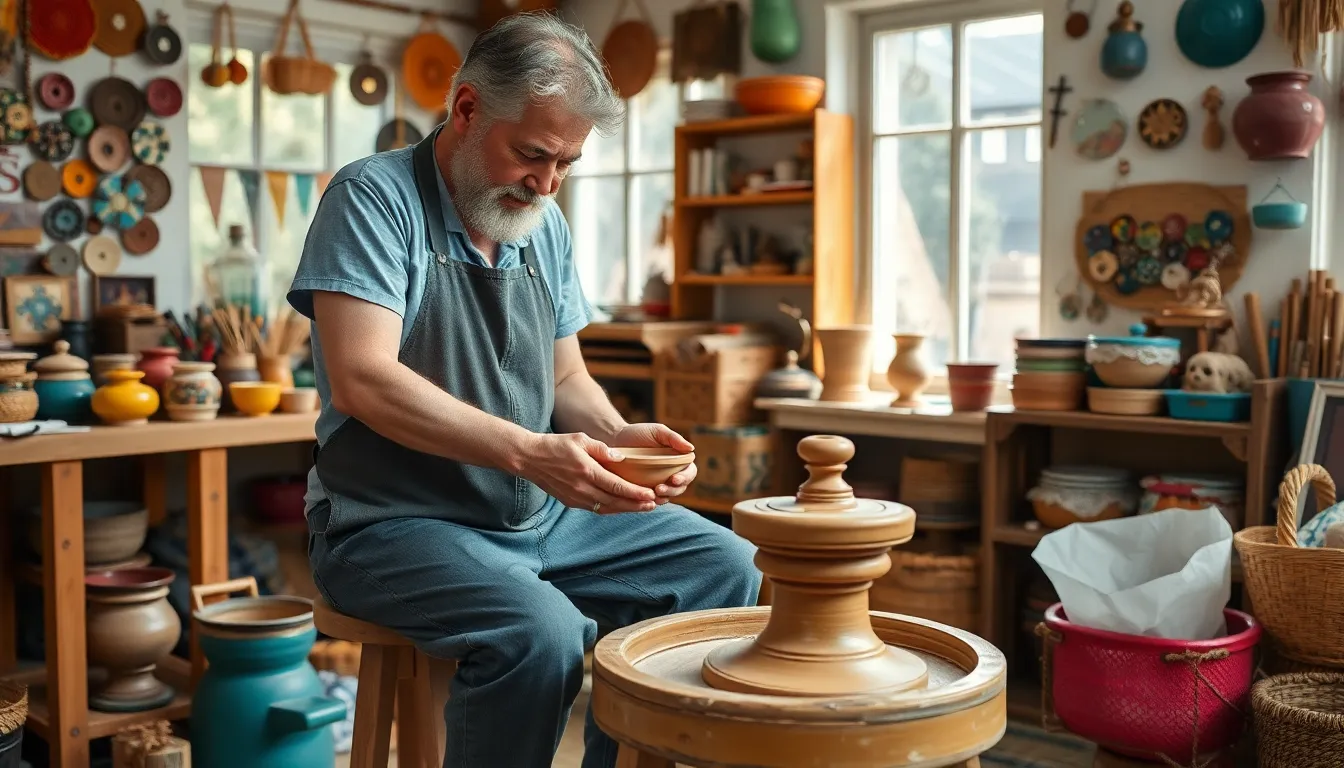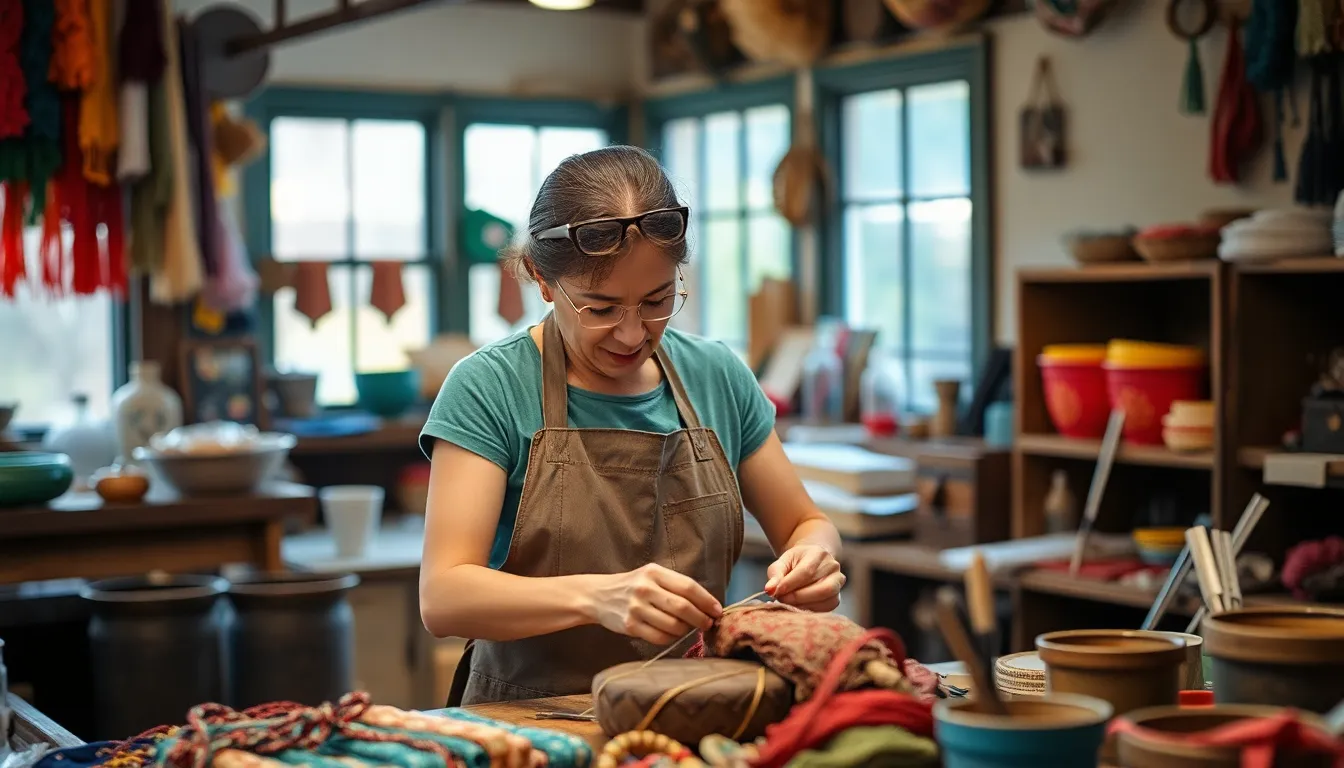In a world overflowing with mass-produced items, handmade creations stand out like a unicorn at a dog show. These unique treasures not only bring a touch of personality to everyday life but also tell a story that factory-made goods simply can’t match. When you choose handmade, you’re not just buying a product; you’re supporting artisans who pour their heart and soul into every piece.
Table of Contents
ToggleOverview of Handmade Creations
Handmade creations stand apart in a market saturated with mass-produced items. These products often reflect the artisan’s skill and creativity, making them more than just goods; they become expressions of art. Unique materials, intricate designs, and personal touch characterize handmade items, offering a distinct appeal.
Consumers increasingly seek products that resonate on a personal level. Handmade items provide this connection through their storytelling. Each piece carries a narrative shaped by the artisan’s experiences and inspirations. Such stories enhance the value of the items, creating emotional ties between the consumer and the creator.
Supporting artisans fosters a sense of community. When individuals purchase handmade creations, they contribute directly to the livelihoods of skilled craftsmen and women. This support aids local economies and encourages sustainable practices, as many artisans prioritize eco-friendly materials and methods.
Market trends also indicate a growing appreciation for uniqueness. Buyers often prefer one-of-a-kind products over generic options. Handmade creations cater to this desire, offering items that cannot be found in traditional retail stores. Customization options further elevate the appeal, allowing consumers to acquire personalized gifts or home decor tailored to their specifications.
Social media and online marketplaces have played significant roles in the visibility of handmade goods. Platforms like Etsy and Instagram showcase the diversity of handmade offerings, connecting artisans with broader audiences. This accessibility invites consumers to explore the rich variety of handmade creations available.
Types of Handmade Creations

Handmade creations encompass a wide range of products, showcasing the diverse talents of artisans. Categories include crafts, clothing, accessories, and home decor, each contributing unique charm and character.
Crafts and Art
Crafts and art represent one of the most vibrant aspects of handmade creations. Sculptures, pottery, and paintings embody an artisan’s creativity. These works often utilize local materials, emphasizing sustainability. Artisans may create functional pieces like handcrafted furniture alongside decorative items. Many pieces tell personal stories, making them more than just items; they become cherished memories.
Clothing and Accessories
Clothing and accessories highlight the ingenuity of handmade fashion. Tailored garments, unique jewelry, and custom bags appeal to consumers seeking originality. Natural fabrics and ethically sourced materials often serve as the backbone for these creations. Artisans focus on craftsmanship, ensuring high-quality work that lasts. Each item carries a distinct narrative, connecting wearers to the artisan’s vision.
Home Decor
Home decor items enhance living spaces with distinctive styles and personalized touches. Handcrafted candles, textiles, and wall art transform ordinary rooms into reflections of individuality. These pieces often incorporate sustainable materials, promoting eco-friendly practices. Consumers frequently choose handmade decor to express their personality, creating a warm and inviting atmosphere. Each item contributes to a home’s aesthetic while supporting artisanal craftsmanship.
The Significance of Handmade Creations
Handmade creations hold considerable importance beyond mere aesthetics. These products enrich cultural identities while fostering a sense of community.
Cultural Impact
Artisans contribute to cultural heritage through their handmade creations. Each item serves as a reflection of rich traditions and local customs. Consumers often find connection with their roots when purchasing handmade goods. Celebrating diverse techniques leads to the preservation of cultural narratives. For instance, traditional crafts from various regions embrace unique materials and styles, ensuring the survival of age-old practices. Additionally, communities around the world benefit from the sharing of artisan stories, creating a platform for cultural exchange.
Economic Benefits
Supporting handmade creations significantly boosts local economies. Artisans directly benefit from consumer purchases, enhancing their livelihoods. Communities experience increased job opportunities as a result of growing demand for handmade goods. Data indicates that local artisans often reinvest their earnings into their regions, promoting overall economic growth. Furthermore, consumers favoring handmade items tend to prioritize sustainable practices, creating demand for eco-friendly production methods. This focus on sustainability nurtures an environment that encourages responsible consumption and encourages innovation.
Challenges Faced by Artisans
Artisans encounter several challenges as they create unique handmade products. Sourcing quality materials often poses a significant hurdle. Accessing sustainable supplies can be difficult, especially when local options are limited. Many artisans prioritize eco-friendly practices, yet finding the right resources requires extra effort and time.
Market competition also presents difficulties. With the rise of mass-produced items, handmade creations struggle to stand out. Consumers may overlook artisanal goods in favor of lower-priced alternatives. Significant differentiation is critical, prompting artisans to emphasize quality and unique characteristics in their branding. Additionally, advertising on social media platforms or online marketplaces increases visibility but demands investment and marketing expertise. Balancing craftsmanship and business acumen becomes essential for artisans to thrive in this competitive landscape.
Handmade creations offer a unique blend of artistry and personal connection that mass-produced items simply can’t match. By embracing these one-of-a-kind products, consumers not only enhance their lives but also support artisans dedicated to their craft. This growing appreciation for individuality fosters a vibrant community and strengthens local economies.
As the market continues to evolve, the demand for handmade goods will likely increase. Artisans who navigate the challenges of sourcing materials and competition will find opportunities to thrive. Ultimately, choosing handmade is a meaningful way to celebrate creativity while making a positive impact on the world around us.



